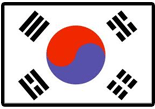
From Gamers Alliance
Throughout our years of publication, we have been fortunate in attracting a diverse group of quality and insightful gamers from all around the world. One such person is Chris Kovac. As Chris, a Canadian, has said: "I have been a gamer since my University days in the 1980's. Initially a wargamer, I was converted over to Euro Games by a friend when he introduced me to Homas Tour (The Bicycle Racing Game) in about 1992. I then managed to get an invite to The Gathering of Friends and have progressed from there. After over a decade of Euro Gaming and attending three Essens, I still enjoy Euros and try and play at least twice a week." Chris first graced these pages in the Spring 2006 issue with his review of Byzantium. In this, his 21st review for GA Report, Chris shows off his "independence".]
The Last of the Independents is an area control game and resource allotment game for up to six people. The game has the interesting theme of car development among the small independent car companies in 1950s USA or, as it says on the game box, “Engineering, Manufacturing and Marketing cars in the post war era“. This game is by a relatively new game company called Numbskull Games and the game designer is Patrick Stevens.
The goal of the game is to“win Car of the Year, gain majority bonuses and fill trends” for victory points. In the game you start with a randomly chosen car company (each has unique strengths in various sections on the board), 20 money chips and four action/trend cards. You fill up your company card with half your money chips which represent your dedicated resources and the remaining ten chips serve as free resources. The game is played over three turns and a start player is determined randomly.
The board consists of 3 category tracks (Models, Engineering, Promotions) which will be “played” and resolved before a final action round occurs to determine Car of the Year and end the turn. At the bottom of the board is a return pool space (for chips to be recovered at the end of the turn) and for the Car of the Year. Each track is resolved by a number of phases starting with the start player.
In the first phase, each player can allocate free money chips to one of the 6-7 sections in a track representing things like various car models, engineering features and promotional items (TV, dealerships, etc.) depending on which track is being resolved. You can put as many chips as you wish on any section. However, you can only place chips on any one space once. This goes around until all players have passed on placing free chips. Next, each player can place chips but only from his company card.
Each player's company card has different sections representing the various strengths and weaknesses of each company with one or two chips placed on these sections. The chips can only be transferred from the player's card to their matching sections on the board (again one space at a time until all players have passed). Finally, the players have a card phase where they can play cards from their hands. Card play allows various ways of manipulating the money chips (I.e. removing opponents' chips, adding chips, etc.). The cards also have three trends listed on them which can be used to put chips on the Car of the Year space and to get victory points so they should be used carefully. Since the rules had no way of passing the first player (it is disadvantageous to play first) we used the following house rule which seemed to improve the game. When the last track is played the first person to pass will become the first player to play on resolving the category track on the next turn.
After all chip placement phases have been done, each section is resolved for control. If only one player has placed a disk in an area, he leaves one disk in that area and puts the rest in the return pool. If more than one player has disks in an area then all the chips are put in the draw bag and one chip is drawn randomly. The winner puts one chip in the section and the rest in the return pool space. Loser(s) lose half their chips (rounded down) to their base pool with the other half placed on the return pool space. If a player wins more sections on a track than any other he gets a victory point.
The next track is then resolved using the remaining chips (free and dedicated) and cards the player still has following the same phases. So good resource allocation is important part of the game. After all the tracks are completed there is a accounting phase where trends on cars are resolved and the Car of the Year is decided (another victory point). If you fulfill a trend on a card by controlling the named section, you can put an extra disk in that section's space (important for the Car of the Year resolution). If you have managed to match all three trends on a card you get a victory point.
Next, all the chips from one track are put in the draw bag and one is drawn. The winner's chips go on the Car of the Year and the losers on the return pool space. Each track is resolved the same way. Then there is a final draw of all the chips on the Car of Year space and the winner wins a victory point. All chips from this draw go back to their respective players. Finally you take all your chips from the return pool space and use them first to fill up any empty spaces on your company card. If you cannot fill up your card you go bankrupt. If you go bankrupt, you lose one victory point chip and the company you were running is put in a discard pile. You chose a new company at random (fill with chips) and continue with the game. If in the course of the game you run out of unused companies you reshuffle the discarded companies and choose from them. Any excess money chips form part of your free action pool. If you have fewer than six chips you fill up to six from your base chip pool. You get four new action/trend cards (you keep any unused cards) and the next turn begins. The game ends after three turns with the player with the most victory points winning and ties being broken by the most chips.
Overall, the production quality of the game is quite good with a nicely mounted board, decent cards and chips. The draw bag in my opinion is a little flimsy and the draw chips tend to get stuck in it so I recommend a draw cup. I like how the game board and cards are illustrated with car advertising literature of the time which adds to the theme of the game. The rules are ok though there are no illustrated examples of game play and I found them a little vague in some parts especially on how the first player rotation works.
The theme is very strong and fits fairly well with the game mechanics; influencing a draw by adding chips to an area is particularly interesting. In order to win at this game, you have to plan using resources carefully and to try to guess where your opponents will place chips and how many. A good draw or two from the random draw bag also helps. Which brings us to a major drawback: random draws.
You can theoretically have up to 24(!) random draws in a turn! This can get very tedious over the course of the game and tends to slow things down considerably. My suggestion to reduce this is to eliminate the draws for each of the category tracks at the end of a turn and just combine them into one big draw (along with any chips added to the Car of the Year due to card play) for Car of the Year.
I really liked the theme of The Last of the Independents and the game mechanics of influencing a draw by adding chips to an area is interesting. However the excessive amount of random draws and the lack of illustrated rule examples makes this, at best, only an above average game which I would give a 7 out of 10. Hopefully the games from this company will improve with time since I think this game designer has some good ideas to show to the gaming hobby. - - - - - - - - Chris Kovac Gamers Alliance





